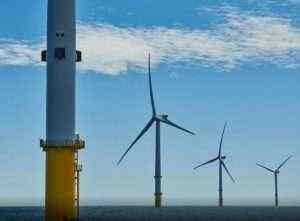A declining balance depreciation is used when the asset depreciates faster in earlier years. To do so, the accountant picks a factor higher than one; the factor can be 1.5, 2, or more. Accumulated depreciation is the total amount of depreciation expense recorded for an asset on a company’s balance sheet.
In the United States, the Internal Revenue Service (IRS) publishes a similar guide on property depreciation. Depreciation is an accounting method that companies use to apportion the cost of capital investments with long lives, such as real estate and machinery. Depreciation reduces the value of these assets on a company’s balance sheet.
What is depreciation expense?
Check out our financial modeling course specialized in the mining industry. Fixed Assets are treated as long-term assets and reported under the assets in the Statement of Financial Position. The assets normally treated as Fixed Assets are an office building or building belonging to the entity, land belonging to the entity, computer equipment, entity care, and others. This accumulation expense reduces the book value of property, plant, and equipment at the end of the charging period. Since the balance is closed at the end of each accounting year, the account Depreciation Expense will begin the next accounting year with a balance of $0.
For the remaining years, the double-declining percentage is multiplied by the remaining book value of the asset. Kenzie would continue to depreciate the asset until the book value and the estimated salvage value are the same (in this case $10,000). Assets are recorded on the balance sheet at cost, meaning that all costs to purchase the asset and to prepare the asset for operation should be included. Costs outside of the purchase price may include shipping, taxes, installation, and modifications to the asset.
Using depreciation to plan for future business expenses
The company expenses another $4,000 next year and another $4,000 the year after that, and so on until the asset reaches its $10,000 salvage value in 10 years. The depreciation rate is used in both the declining balance and double-declining balance calculations. The sum-of-the-years’ digits (SYD) method also allows for accelerated depreciation. For example, an asset with a useful life of five years would have a reciprocal value of 1/5, or 20%.
Accounting Matters – Federal Energy Regulatory Commission
Accounting Matters.
Posted: Wed, 30 Aug 2023 18:35:32 GMT [source]
This difference is not unexpected when you consider that tax law is typically determined by the United States Congress, and there often is an economic reason for tax policy. Notice that in year four, the remaining book value of $12,528 was not multiplied by 40%. Since the asset has been depreciated to its salvage value at the end of year four, no depreciation can be taken in year five. Similar to the declining-balance method, the sum-of-the-year’s method also accelerates the depreciation of an asset.
Double declining depreciation
The difference is over or Under and Results in Deferred Tax Assets or Deferred Tax Liabilities. The Deferred Tax Assets or Liabilities are calculated by multiplying the net book value @ tax rate. In this case, mainly to avoid the tax form 1120 difference, the company usually adopts an accounting policy consistent with tax allowance. To make the topic of Depreciation even easier to understand, we created a collection of premium materials called AccountingCoach PRO.
In a very busy year, Sherry’s Cotton Candy Company acquired Milly’s Muffins, a bakery reputed for its delicious confections. After the acquisition, the company added the value of Milly’s baking equipment and other tangible assets to its balance sheet. For the past decade, Sherry’s Cotton Candy Company earned an annual profit of $10,000. One year, the business purchased a $7,500 cotton candy machine expected to last for five years. An investor who examines the cash flow might be discouraged to see that the business made just $2,500 ($10,000 profit minus $7,500 equipment expenses).
Depreciation of some fixed assets can be done on an accelerated basis, meaning that a larger portion of the asset’s value is expensed in the early years of the asset’s life. He estimates that he can use this machine for five years or 100,000 presses, and that the machine will only be worth $1,000 at the end of its life. He also estimates that he will make 20,000 clothing items in year one and 30,000 clothing items in year two. Determine Liam’s depreciation costs for his first two years of business under straight-line, units-of-production, and double-declining-balance methods. In some cases, it makes more sense to calculate depreciation by measuring the work the asset does, rather than the time it serves.
Using these variables, the accountant calculates depreciation expense as the difference between the asset’s cost and its salvage value, divided by its useful life. A major advantage of the declining balance method of depreciation is that it matches https://online-accounting.net/ the costs of the asset to the revenue it generates. A higher amount of depreciation is charged in the initial year when the asset is more productive. On the other hand, a lower amount is charged in the later years of the asset’s life.
Amortization vs. Depreciation: An Overview
To see how the calculations work, let’s use the earlier example of the company that buys equipment for $50,000, sets the salvage value at $2,000 and useful life at 15 years. The estimate for units to be produced over the asset’s lifespan is 100,000. In a typical case, when there is a difference between accounting and tax depreciation, this would differ from the net book value of fixed assets per accounting and tax. These assets are often described as depreciable assets, fixed assets, plant assets, productive assets, tangible assets, capital assets, and constructed assets.
I Don’t Appreciate Your Alleged Depreciation – Dentons
I Don’t Appreciate Your Alleged Depreciation.
Posted: Tue, 05 Sep 2023 16:08:29 GMT [source]
It is not logical for the retailer to report the $70,000 as an expense in the current year and then report $0 expense during the remaining 6 years. However, it is logical to report $10,000 of expense in each of the 7 years that the truck is expected to be used. A loan doesn’t deteriorate in value or become worn down over use like physical assets do.
The accumulation of it is recorded in the accumulated depreciation, the contra account to the fixed assets, in the balance sheet. To illustrate an Accumulated Depreciation account, assume that a retailer purchased a delivery truck for $70,000 and it was recorded with a debit of $70,000 in the asset account Truck. Each year when the truck is depreciated by $10,000, the accounting entry will credit Accumulated Depreciation – Truck (instead of crediting the asset account Truck). This allows us to see both the truck’s original cost and the amount that has been depreciated since the time that the truck was put into service. Depending on the asset and materiality, the credit side of the amortization entry may go directly to to the intangible asset account.
It doesn’t depreciate an asset quite as quickly as double declining balance depreciation, but it does it quicker than straight-line depreciation. Instead of realizing the entire cost of an asset in year one, companies can use depreciation to spread out the cost and match depreciation expenses to related revenues in the same reporting period. This allows a company to write off an asset’s value over a period of time, notably its useful life. The sum-of-the-years digits method is an example of depreciation in which a tangible asset like a vehicle undergoes an accelerated method of depreciation. Under the sum-of-the-years digits method, a company recognizes a heavier portion of depreciation expense during the earlier years of an asset’s life.
- But the depreciation charges still reduce a company’s earnings, which is helpful for tax purposes.
- Expensing the costs fully to a single accounting period doesn’t portray the benefits of usage over time accurately.
- Accumulated depreciation is subtracted from the historical cost of the asset on the balance sheet to show the asset at book value.
- These entries are designed to reflect the ongoing usage of fixed assets over time.
- But with that said, this tactic is often used to depreciate assets beyond their real value.
- This difference is not unexpected when you consider that tax law is typically determined by the United States Congress, and there often is an economic reason for tax policy.
The cost of the building, minus its resale value, is spread out over the predicted life of the building, with a portion of the cost being expensed in each accounting year. See Form 10-K that was filed with the SEC to determine which depreciation method McDonald’s Corporation used for its long-term assets in 2017. As a side note, there often is a difference in useful lives for assets when following GAAP versus the guidelines for depreciation under federal tax law, as enforced by the Internal Revenue Service (IRS).
What Is Depreciation? Definition, Types, How to Calculate
Depreciation expenses are subtracted from the company’s revenue as a part of the net income calculations. Businesses have some control over how they depreciate their assets over time. Good small-business accounting software lets you record depreciation, but the process will probably still require manual calculations. You’ll need to understand the ins and outs to choose the right depreciation method for your business. This method requires an estimate of the total units an asset will produce over its useful life.
The straight-line depreciation is the easiest and most frequently used depreciation method. It distributes depreciation expenses equally over all periods of the asset’s useful life. Accumulated depreciation is the summation of the depreciation expense taken on the assets over time.


